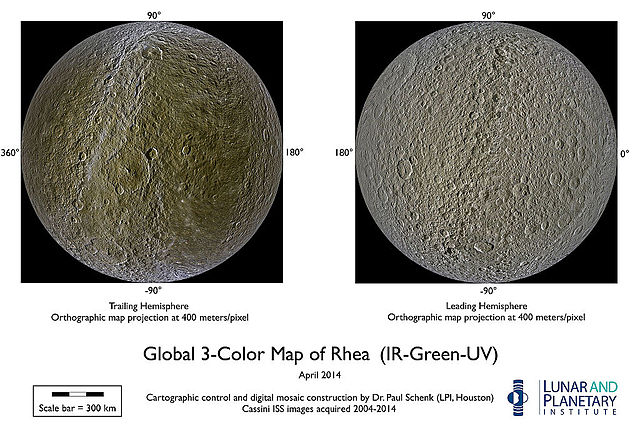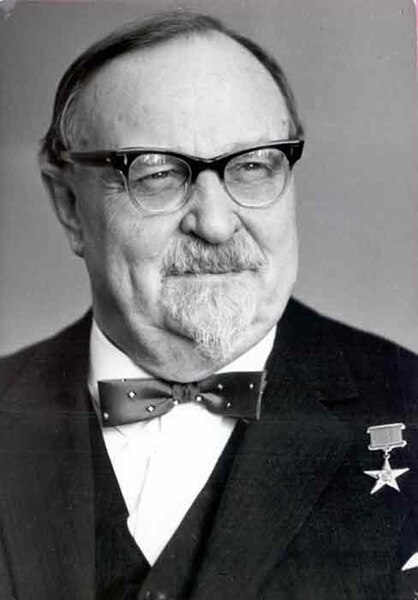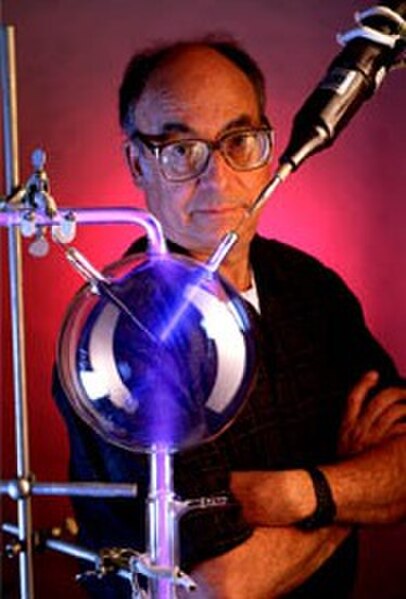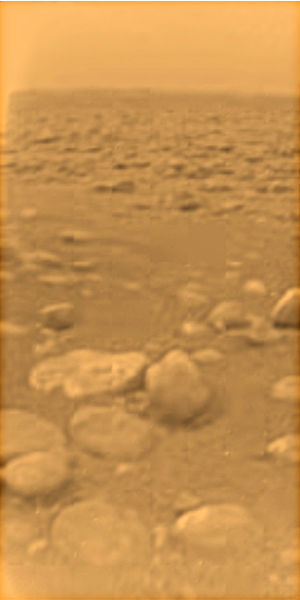Tholin
Videos
Page
Tholins are a wide variety of organic compounds formed by solar ultraviolet or cosmic ray irradiation of simple carbon-containing compounds such as carbon dioxide, methane or ethane, often in combination with nitrogen or water. Tholins are disordered polymer-like materials made of repeating chains of linked subunits and complex combinations of functional groups, typically nitriles and hydrocarbons, and their degraded forms such as amines and phenyls. Tholins do not form naturally on modern-day Earth, but they are found in great abundance on the surfaces of icy bodies in the outer Solar System, and as reddish aerosols in the atmospheres of outer Solar System planets and moons.

The surface of Titan as viewed from the Huygens lander. Tholins are suspected to be the source of the reddish color of both the surface and the atmospheric haze.

Linear fractures on Europa's surface, likely colored by tholins.

The trailing hemisphere of Saturn's moon Rhea is covered with tholins.

Close-up view of Sputnik Planitia on Pluto as viewed by the New Horizons spacecraft, showing nitrogen ice glaciers and reddish-colored tholins.
Miller–Urey experiment
Videos
Page
The Miller–Urey experiment (or Miller experiment) was an experiment in chemical synthesis carried out in 1952 that simulated the conditions thought at the time to be present in the atmosphere of the early, prebiotic Earth. It is seen as one of the first successful experiments demonstrating the synthesis of organic compounds from inorganic constituents in an origin of life scenario. The experiment used methane (CH4), ammonia
(NH3), hydrogen (H2), in ratio 2:2:1, and water (H2O). Applying an electric arc (the latter simulating lightning) resulted in the production of amino acids.

Portrait photograph of Alexander Oparin

Stanley Miller in 1999, posed with an apparatus like that used in the original experiment

The surface of Titan as viewed from the Huygens lander. Tholins, complex particles formed by UV irradiation on the N2 and CH4 atmosphere, are likely the source of the reddish haze.

Conceptual figure from Wogan et al. (2023) depicting three stages phases of atmospheric chemistry after a large asteroid impact on the Hadean Earth. In phase 1, the impactor vaporizes the ocean, and H2 is generated after iron delivered by the impactor reacts with hot steam. In phase 2, H2 reacts with CO2 to produce CH4 while the atmosphere cools for thousands of years and steam condenses to an ocean. Phase 3 represents the Miller-Urey atmosphere that persists for millions of years, where N